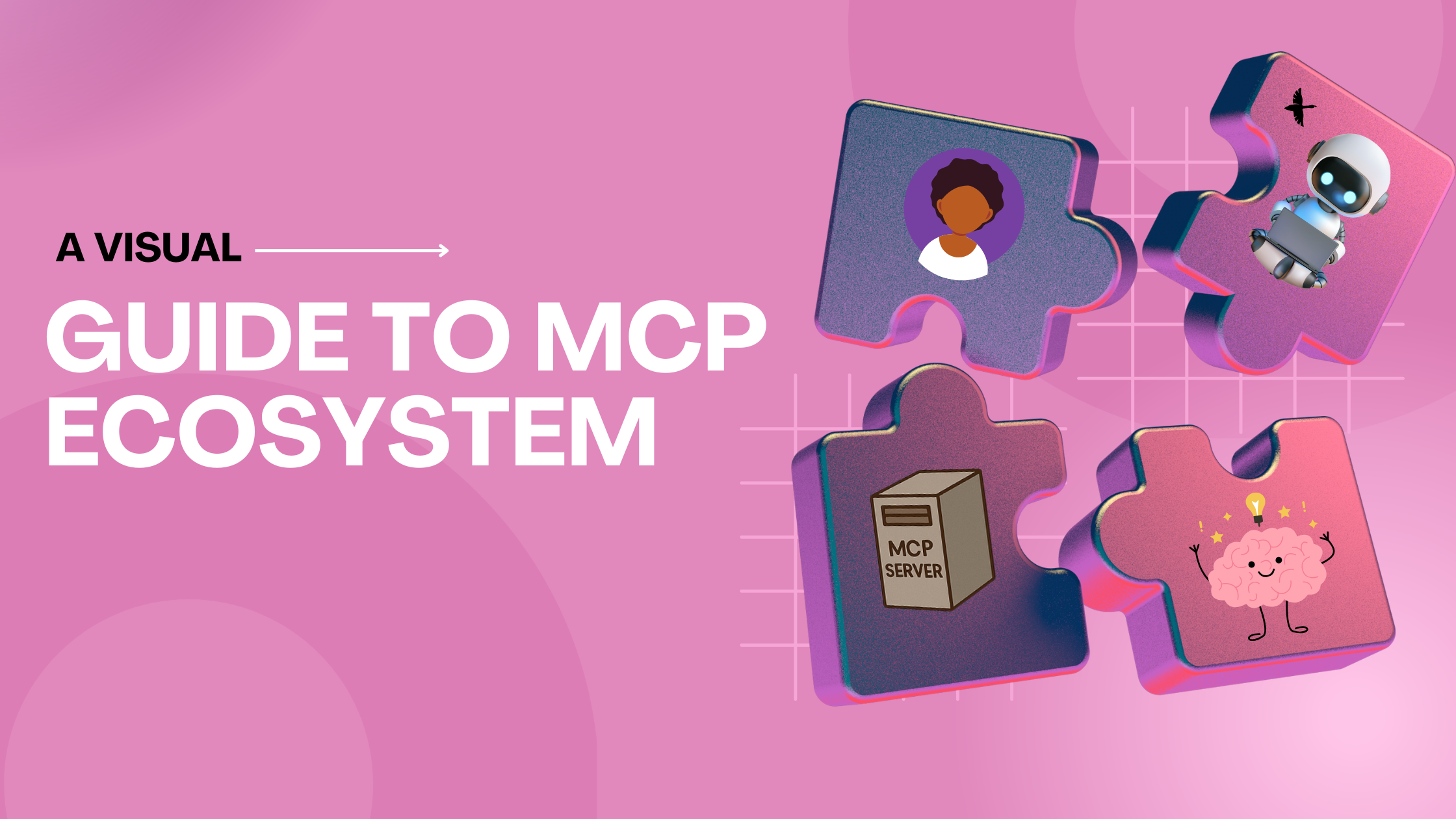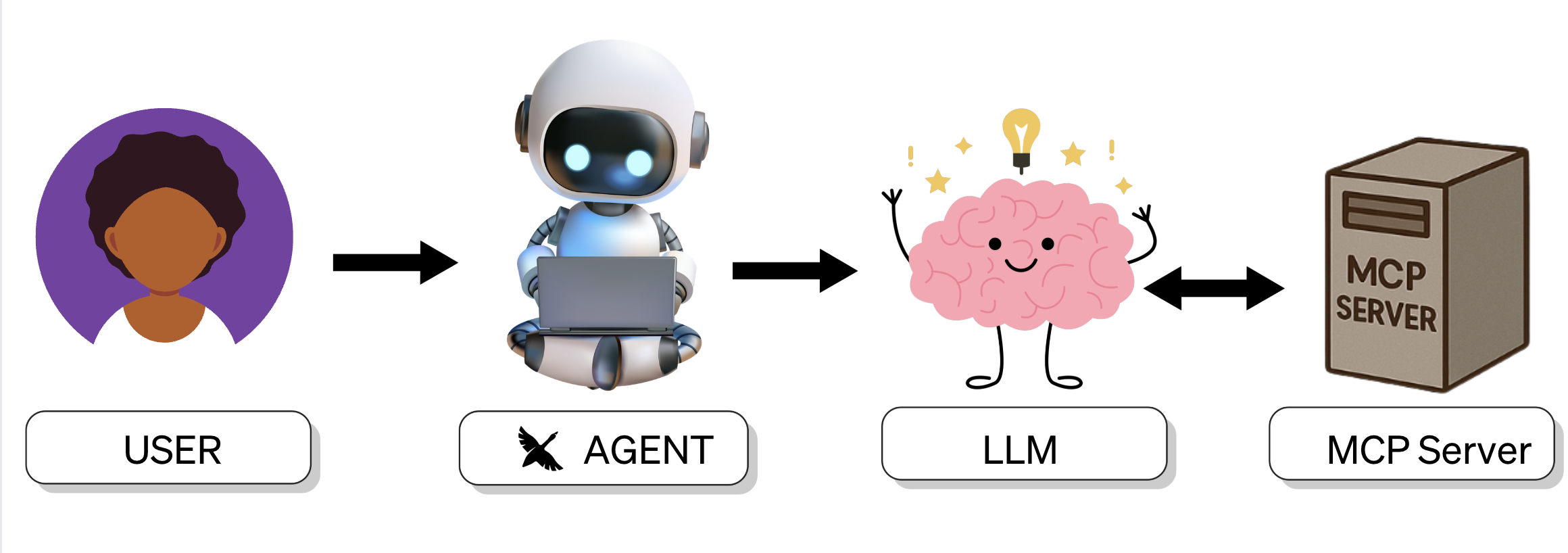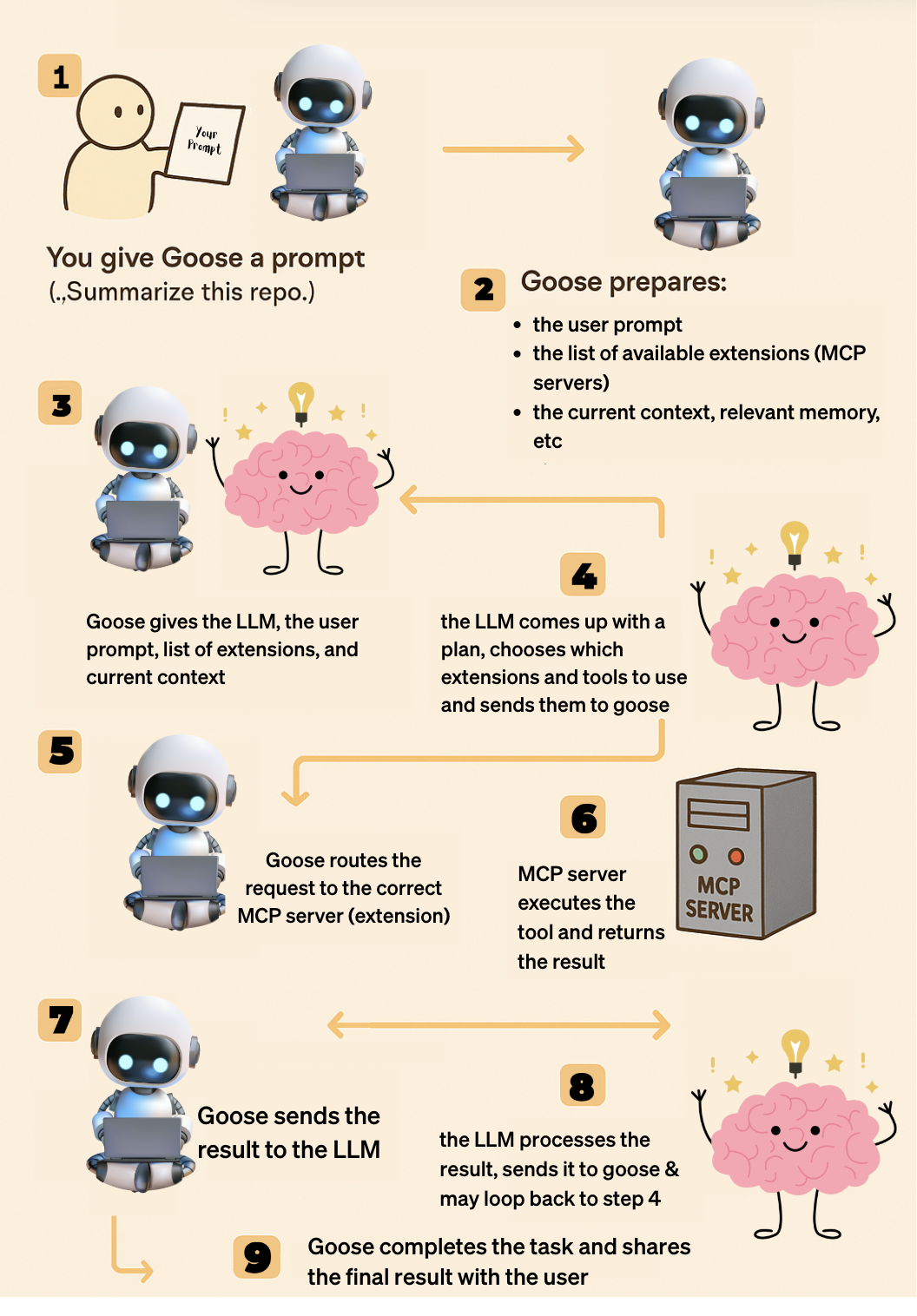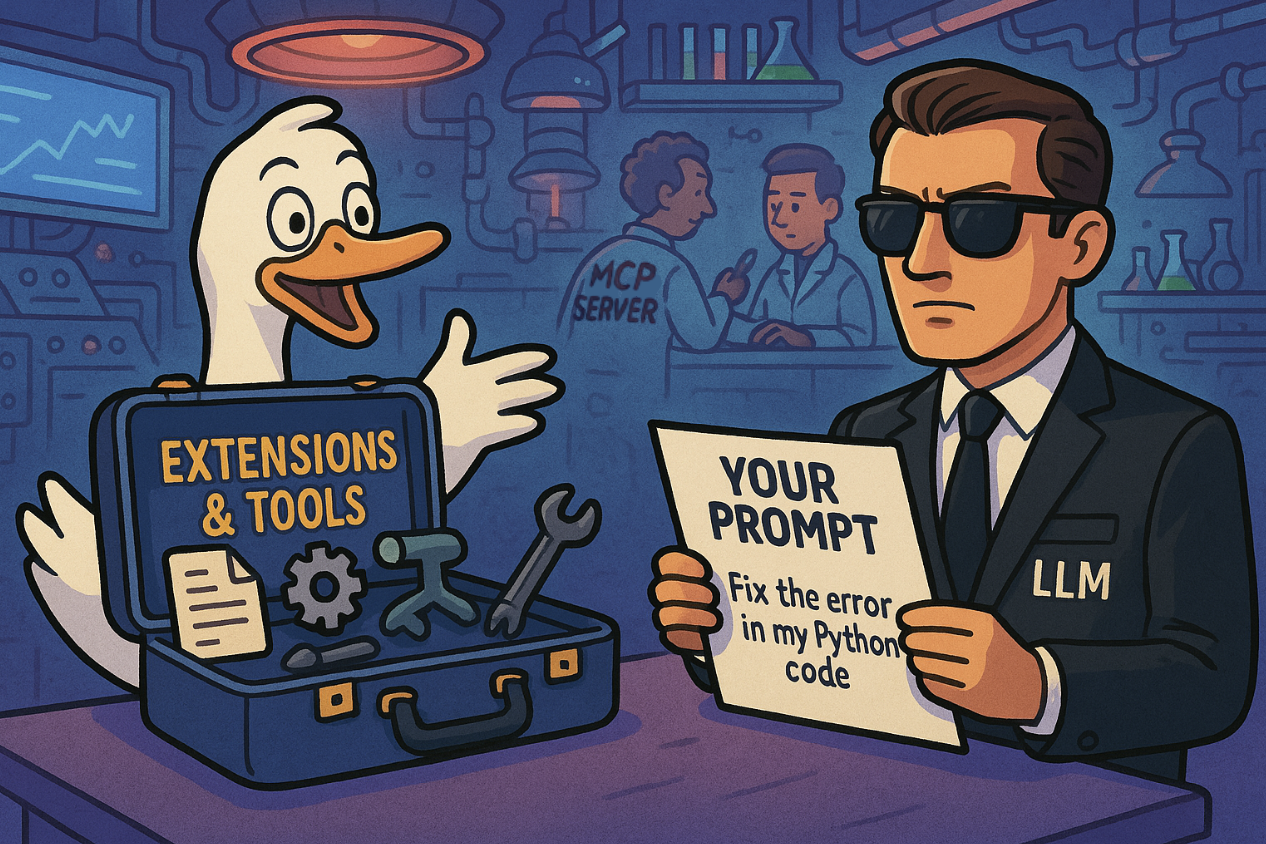A Visual Guide To MCP Ecosystem

You ever open a GitHub repo or blog post, read the first sentence, and immediately feel like you’ve stumbled into a PhD dissertation?
Yeah. Same.
MCP (Model Context Protocol) sounds complicated, but it’s really not. Think of this as your go to cheat sheet, no whitepapers, no academic jargon, just plain English and a few good visuals.
Let's break this down together.
What Is MCP in Plain English?
MCP is like a universal translator between your AI agent, like Goose, and external tools, files, databases, APIs, you name it.
It gives your agent a way to ask questions, run tools, store/retrieve context, and keep track of everything it knows.
Instead of cramming everything into one prompt like “here’s 10k tokens worth of context, good luck,” MCP helps the model pull what it needs, when it needs it.
Who Are The Players?

-
User – You, the person with the big ideas and messy problems
-
Agent – The AI agent, Goose, living in your CLI, IDE, or desktop application
-
LLM – The model that does the reasoning (like Claude, GPT-4, etc.)
-
MCP Servers (Extensions) – Goose's toolbox: built-in and custom extensions that give goose the ability to execute tasks
How Do They Communicate?
Lets take a look at how all the players work together:
 In this flow, the user kicks things off by giving Goose a prompt. Goose gets the prompt ready, along with its available tools and any relevant context, and hands it off to the LLM. The LLM decides which tools it needs to complete the task. Goose then routes those tool calls to the right MCP servers, and they execute the tasks. As steps of the task are being completed, informs you, the user, of what it's done and can also loop with the LLM as needed.
In this flow, the user kicks things off by giving Goose a prompt. Goose gets the prompt ready, along with its available tools and any relevant context, and hands it off to the LLM. The LLM decides which tools it needs to complete the task. Goose then routes those tool calls to the right MCP servers, and they execute the tasks. As steps of the task are being completed, informs you, the user, of what it's done and can also loop with the LLM as needed.
Here's An Analogy
Let’s make this even clearer with a James Bond analogy. Sometimes a story makes it all click.

If you’ve ever seen a James Bond movie, you know the scene, Bond walks into Q’s lab before the mission. Q opens up the suitcase of gadgets, exploding pens, invisible cars, grappling watches, you name it.
Goose is like Q in this situation. The suitcase is already packed with tools, built-in and custom extensions (MCP servers).
Before the LLM (Bond) starts the mission, Goose gives it the full briefing:
"Here’s your target (the prompt). Here’s your gadget suitcase (the extensions you can use). Good luck."
The MCP servers?
That’s the hidden team in the back actually building the gadgets and handing them over when Bond needs them in the field.
The LLM (Bond) picks the right gadgets for the mission, Goose routes the request to the right MCP server, MCP makes sure they work, and the whole operation runs smoothly.
Without Goose handing over the gadget suitcase, the model would just show up in the field with nothing but a tuxedo and a smile, and we don't want to know how that ends.
Your Turn
Now that you’ve got the basics down, and you understand how the MCP ecosystem works, it’s time to try it yourself.
The Quickstart Guide walks you through connecting your first MCP server.
And when you’re ready to explore more, head over to the tutorials section in the docs — it has step-by-step guides and short video demos to show you how to connect to a variety of MCP servers.
And don't forget to join the community to see what others are building, ask questions, or to simply connect.